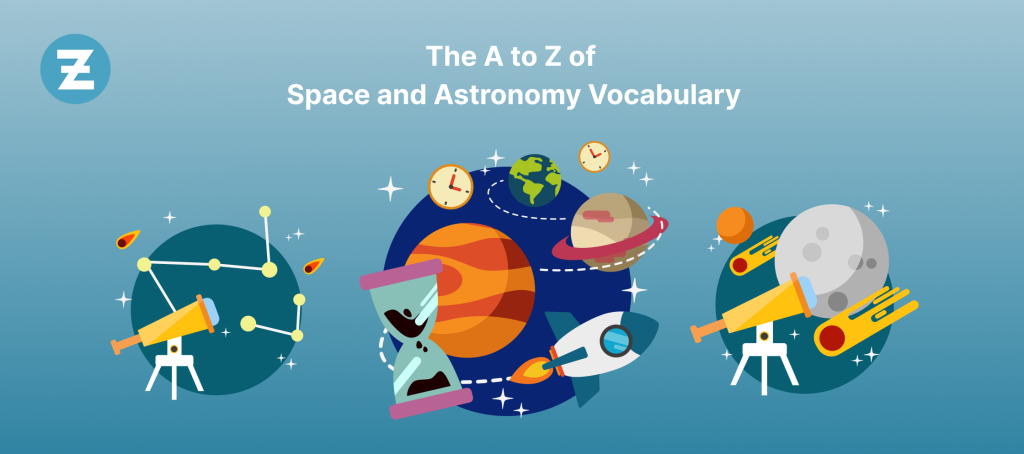There’s something about looking up at the sky that captivates us. It doesn’t matter if it’s day or night, there it is. It’s huge and vast, and we can’t help but feel small in comparison. No words can describe how massive space is, but that doesn’t stop us from trying. Sure, we had to use math to measure it, but even then we still don’t get it. The big goal with this guide is just to try and help you see why some people dedicate their lives to studying space. Humans are curious by nature, and the more questions we have the more we want answers. So let’s dive into this field and unravel everything from A to Z.
Read Also: How To Say No Politely
A – Astronomy
This field of study is dedicated to the science of celestial objects like stars, planets, and galaxies. Using physics, math, and chemistry researchers aim to explain the secrets of space.
B – Black hole
There’s no denying that these things are mysterious. We don’t fully understand black holes. They form when a massive star collapses on itself due to gravity. Their gravity is so strong that it doesn’t even let light escape which makes it impossible to directly observe.
C – Cosmic Microwave Background:
At one point or another you blow on hot soup. What if I told you radiation is like a cup of soup? Although cold now, it was once a boiling liquid soup of particles and energy that brought existence to everything we know today
D – Dark Matter:
Dark matter is invisible, but it makes up a lot of the universe’s mass. It can’t be detected by regular means, but the gravitational pull on it helps shape galaxies and galaxy clusters.
E – Exoplanets:
When we think about planets outside our system, we wonder if they hold life as well. And that’s one of the reasons exoplanets were discovered. Using different techniques like transit observations or radial velocity measurements, astronomers have already found thousands of them.
F – Fermi Paradox:
It’s interesting to think about how big the universe is. And if there are potentially habitable planets — then where are the extraterrestrial civilizations? That’s what the Fermi Paradox proposes. Scientists and researchers have thought of tons of theories, some say self-destruction, others just say interstellar communication is too hard for us to do.
| Want to Captivate Audiences with Your Speech? Learn New Words the Fun Way! |
G – Galaxy Clusters:
Gravity is a powerful thing. Strong enough to bring galaxies together and form huge conglomerates of them. The universe’s biggest structures are these galaxy clusters. Every single one housing thousands of galaxies.These things are a wild glimpse into how dark matter, galaxies, and intergalactic gas all interact with each other.
H – Hawking Radiation:
Keep in mind, black holes are dense. But Hawking suggested they could lose mass by releasing radiation. This is hard to believe because it challenges the thought of them being eternal and what everyone else thinks.
I – Interstellar Medium
The interstellar medium is like a playground for random things. You know how you play tag with your friends and there’s always that one guy who touches everything? Yeah, imagine the entire universe as a game of tag. Floating around out there is gas, dust, and particles. It’s just like life on earth but more spaced out.
J – Jet Propulsion:
Space is a big mystery to us. We’re really trying to find out what’s out there, like the rest of the universe. To do this, we use jet propulsion in space exploration. It makes travel through space revolutionary and easy. With it, we can explore distant worlds and cover large cosmic distances. It even has chemical propulsion and ion drives that help spacecraft be careful with their movements and efficiency when traveling through space.
K – Kuiper Belt:
There’s an area past Neptune called the Kuiper Belt. In it, our solar system has a number of dwarf planets and icy bodies that work together to keep it alive…or maybe dead I don’t know honestly. Inside this cold place are things like Pluto and Eris, giving us some important insights on our systems conditions when it started up.
L – Lunar Exploration:
For centuries the moon has been an object of fascination for humans across the globe, so it only makes sense that people would want to explore it. The Apollo mission is one of those ways we did just that. They mark a major achievement for humanity as we witnessed Neil Armstrong take historic steps on the lunar surface.
M – Magnetars:
Magnetars, a rare type of neutron star with insanely powerful magnetic fields, represent the extreme might found in all of space. They’ll occasionally release a burst of X-rays and gamma rays, lighting up the cosmos with their incredible radiation.
N – Nebulae:
Nebulae, these huge clouds of gas and dust scattered throughout galaxies, work like a star nursery. New stars are born here. A beautiful sight that came in different shapes and colors. The Pillars of Creation from the Eagle Nebula to the Orion Nebula that’s filled with bright light.
O – Oort Cloud:
A vast sphere made of icy bodies is said to surround the entire solar system. This is known as the Oort Cloud. It’s said to be where comets come from. Long period ones at least.
P – Pulsars:
Imagine a light house, but in space. That’s what pulsars are. They are spinning neutron stars that emit beams of radiation. The light they produce is so precise, we can detect it on earth.
| Level Up Your Language Skills: Play And Learn With Zoundslike |
Q – Quasars:
If you were to put the sun next to a quasar, the quasar would outshine the sun. These bright beacons can be found at the center of distant galaxies. Supermassive black holes power them with things that have been swallowed up and intense radiation.
R – Redshift:
Stand in front of a red light long enough and eventually your hair will turn red, just kidding! But seriously though, a similar thing happens to light when coming from far objects in space. Instead of turning red, though, it shifts towards the red end of electromagnetic spectrum. By doing this we can measure how far away something is and how quickly space is expanding.
S – Super Explode:
When a massive star dies it goes out with a bang. Like fireworks on the 4th of July, except it’s in space and doesn’t make pretty colors. But what it does do is scatter heavy elements into space, which gives life the building blocks it needs to grow. They release so much energy that they even outshine entire galaxies, but only for a short time.
T – Time Space:
Sometimes time can be weird, especially when you’re near something really heavy. We can thank Einstein for figuring this one out. What happens is that when you go near something really big or go really fast, time starts running differently for people who aren’t around you. This has major implications for GPS as well as the way we understand light through huge black holes.
U – Universe:
The universe, the vast expanse of space, time, matter, and energy, encapsulates all of existence. It comprises countless galaxies, stars, planets, and cosmic phenomena, each contributing to the grand narrative of cosmic evolution
V – Variable Stars:
What do you think of a star that constantly changes how bright it is? These things exist, and they’re called variable stars. Although it’s weird to think about, these stars switch between levels of brightness for reasons scientists still don’t know. But despite their quirkiness, we get a lot out of them. They help guide astronomers as they explore the universe. It tells us so much about the world around them.
W – The White Dwarfs:
Ever wondered what happens to a star like our sun after it dies? Well, apparently it turns into something called a white dwarf. They’re made up mainly of carbon and oxygen which makes them pretty dense (or tightly packed for those who don’t know). So far, nothing else is known about them since they cool down over billions of years and fade away into obscurity in that time.
X – X-Ray Astronomy:
X-ray astronomy gives us the power to peek into the high-energy universe, chipping away at the mystery of cosmic phenomena. With this tool, scientists can now explore things like black holes, neutron stars, and supernova remnants.
Y – Yellow Dwarf:
Our sun, a G-type main-sequence star often referred to as a yellow dwarf, is the radiant heart of our solar system. It illuminates our days with life’s light. This big ball of fire also serves as the main source that fuels everything on Earth from climate change to ecosystems.
Z – Zodiacal Light:
Have you ever seen some weird sunlight in the sky? Yeah, just like that. It’s actually called zodiacal light, and it’s created by when sunlight bounces off space dust floating around in our solar system. By doing this, it creates a luminous cone of light we can see right before sunrise or after sunset when the sun is low and the sky is dark. It also seems to just perfectly line up with zodiac constellations.
Read Also: 9 Tips to Learn English Quickly
In Conclusion
Throughout this guide, we’ve gone over a lot of space words together. Everything from black holes to zodiacal light. With this newfound vocabulary, you can finally begin to understand the wonders of the universe and have a strong start on your journey to research and explore what’s out there. Just remember that it’s always growing, so keep looking for new things to learn. A language learning app like Zoundslike is also available for download if you want to improve even more on your speech and build on your new understanding of Space and Astronomy Vocabulary. Once again, enjoy the stars!








